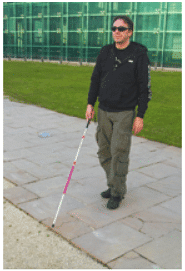Worksheet: Saying Without Speaking - 1 | EVS for Class 3 PDF Download
Q1: Fill in the blanks.
(i) The game played in which people have to communicate without speaking is called ______.
(ii) People need to talk through actions when they cannot use their ________ to communicate.
(iii) Children who cannot hear and speak use ________ to communicate with others.
(iv) Aftaab’s favourite toy has fallen and broken, making him feel ________.
(v) Mudras and bhavs are used in ________ to convey feelings and emotions.
Q2: True or False.
(i) The poet Jeanne Whitehouse Peterson has a brother who is deaf.
(ii) Aftaab is happy because his favourite toy has broken.
(iii) Children can express themselves through their face and hands before they can speak.
(iv) Yamini’s mother is happy that the bottle of pickle broke.
(v) Rehana is afraid of dogs.
Q3: Name the following.
(i) Game where people communicate without speaking
(ii) What is Rehana afraid of?
(iii) How many people should be in each group for the game of Dumb Charades?
(iv) What is Julie excited about?
(v) What happened to Yamini’s pickle bottle?
Q4: Give two examples of each.
(i) People who cannot hear or speak communicate
(ii) Purpose of teaching sign language in schools
(iii) Young children express themselves before they can speak
(iv) What are mudras and bhavs in dance?
(v) How do people who cannot hear or speak communicate?
Q5: Identify the images.
(i)
(ii)
(iii)
(iv)
(v)
Q6: Short answer type questions.
(i) What is the game described in the passage, and how is it played?
(ii) How do people who cannot hear or speak communicate?
(iii) What special ability does the sister in the poem have, and what can she not do?
(iv) How can children express their feelings and develop their creative expression abilities?
(v) What are mudras and bhavs in dance?
You can access the solutions to this worksheet here.
|
62 videos|326 docs|48 tests
|
FAQs on Worksheet: Saying Without Speaking - 1 - EVS for Class 3
| 1. What is the significance of non-verbal communication? |  |
| 2. What are some common non-verbal cues people use to communicate? |  |
| 3. How can non-verbal communication be misinterpreted? |  |
| 4. Can non-verbal communication be learned and improved upon? |  |
| 5. How does non-verbal communication impact professional relationships? |  |















